We rented a car for a couple of days that we used to drive around the Mainland of Orkney and adjacent islands. It is unbelievable how many historic places there are for exploration. We only had time to visit a few sites because we also wanted to see the beautiful nature of Orkney as well.
At first we went to see the two ancient stone rings that got our imagination running on overtime. How on earth the people have quarried with primitive tools these huge stone pillars and have transported them to make the ring formations? The purpose of ring is unknown but the feeling inside the ring is so heart stopping that it is easy to believe that they were a sacred places or stages for performing rituals.
Standing Stones of Stenness is one of the oldest stone henges in the UK. It is built 3100 BC. The stones are up to six metres tall and by standing next to them you feel yourself really small. The stone ring is 44 metres in diameter and only some of the original stones are still intact. Despite of this the site is really amazing. No wonder that Diana Gabaldon has used the prehistoric rings in her novels as portals for time travel. We fortunately stayed in our own time and continued to still a bigger ring.
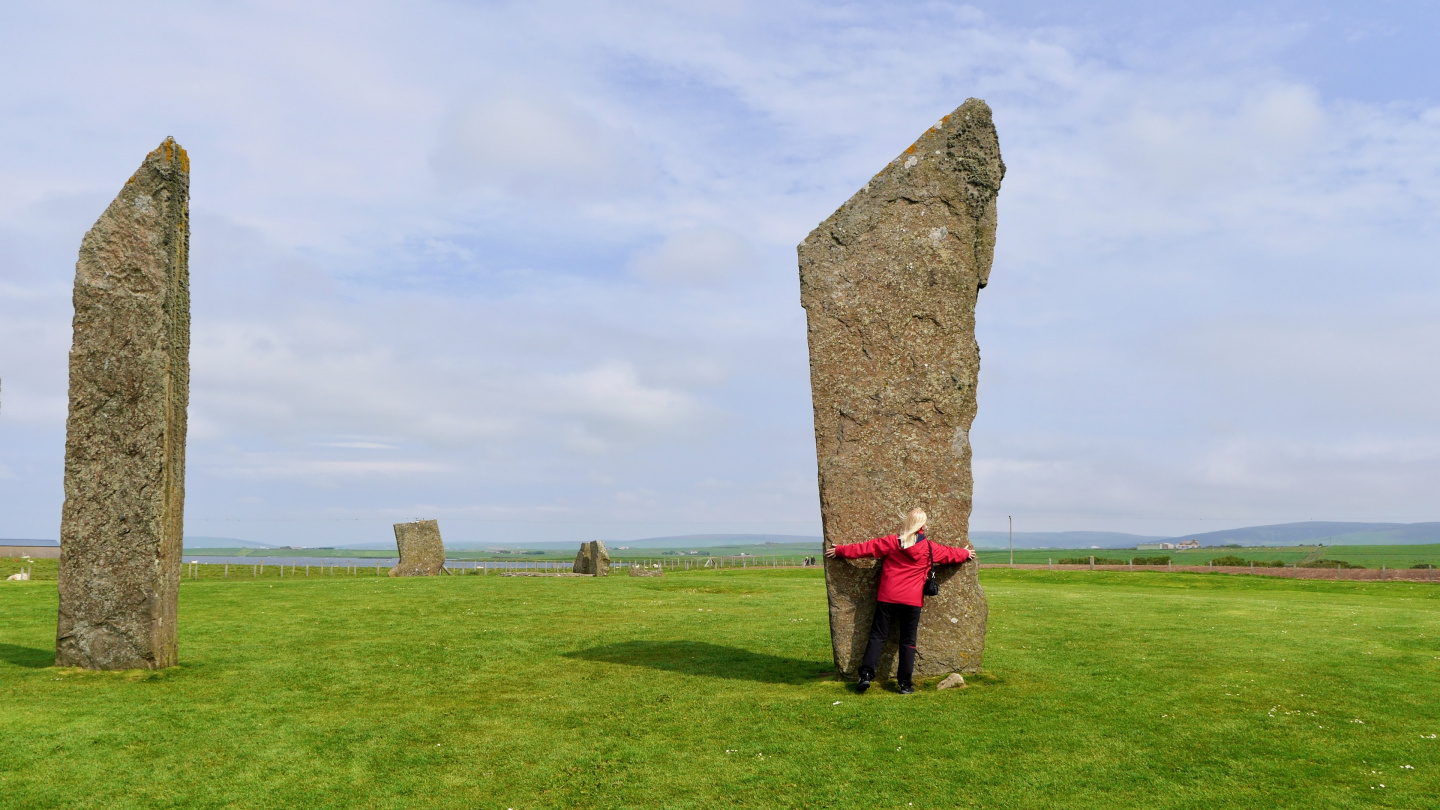
The Ring of Brodgar is located only a mile from the smaller ring and there is also located the Maeshowe cairn and several single standing stones in the same area as well.
The Ring of Brodgar is a huge stone ring which diameter is 104 metres. It is estimated that it is built between 2500 BC to 2000 BC. It is the third largest stone ring in the UK. Originally there were 60 pieces of 2 to 5 metre tall standing stones from which only 27 have survived. The ring has two entrances. Both the inside and outside of the ring there are a plenty of space for a big crowd to follow whatever rituals there might have been performed. The true meaning of the rings remains mystery but they must have been special. Why otherwise did they put so much effort for building such a vast structures over 5000 years ago during the neolithic era?
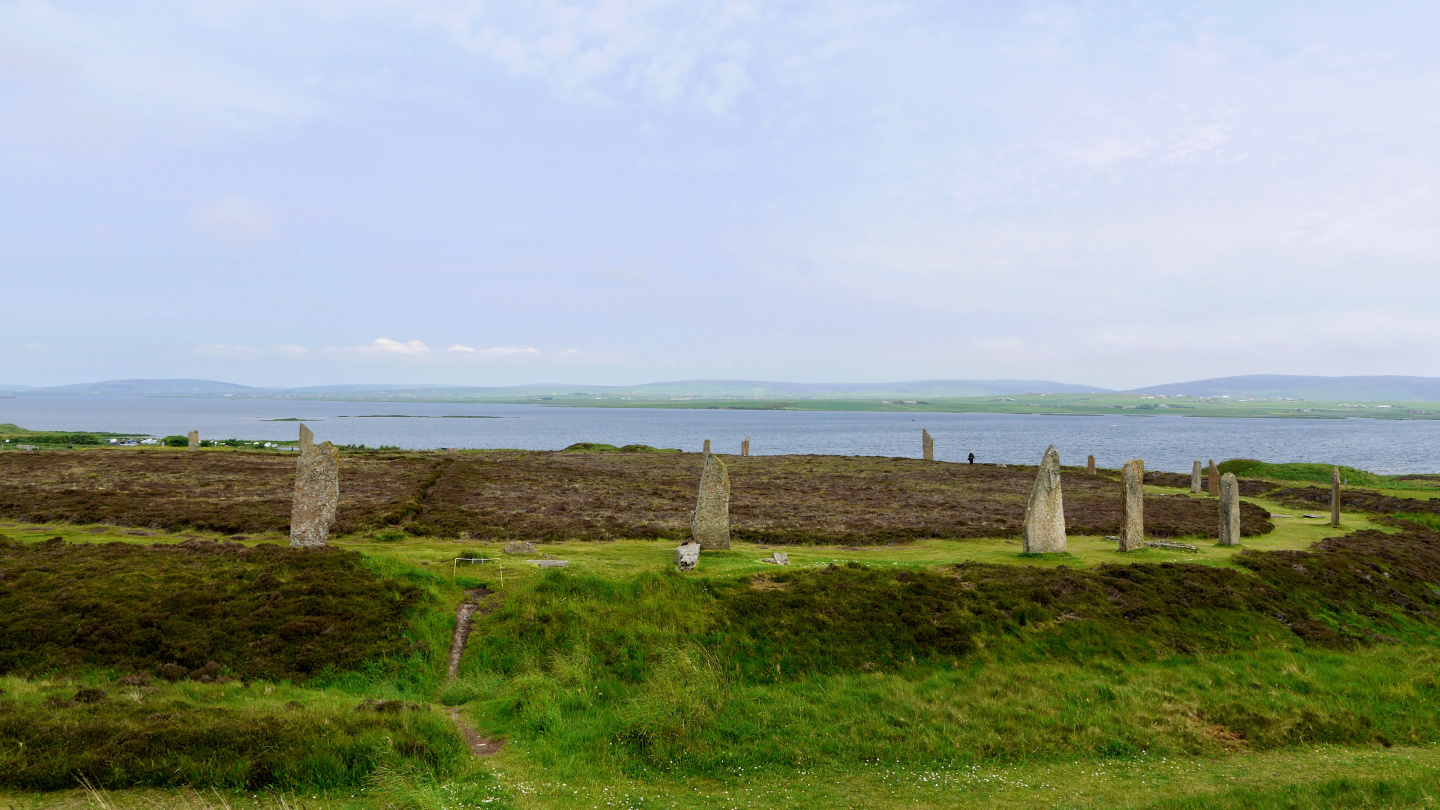
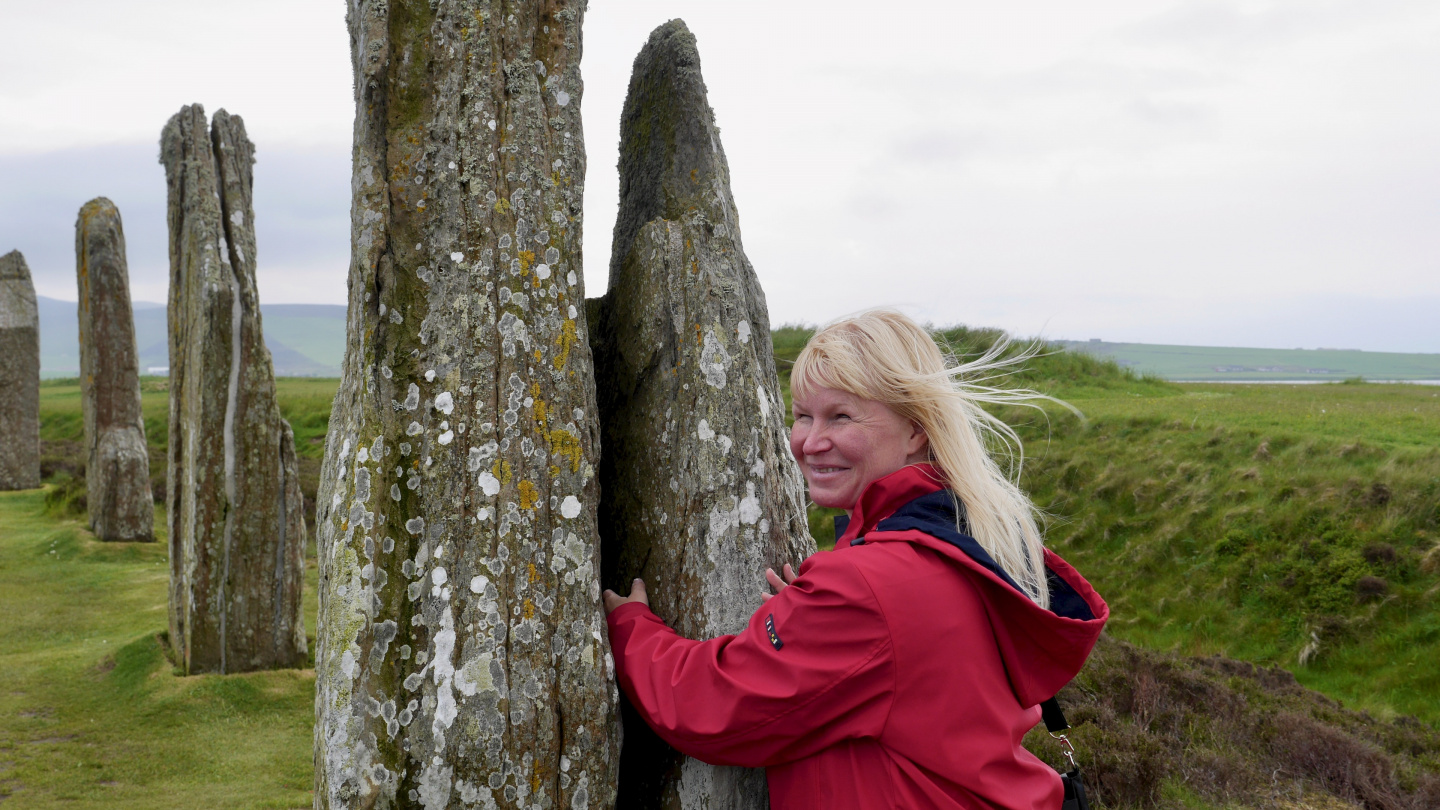
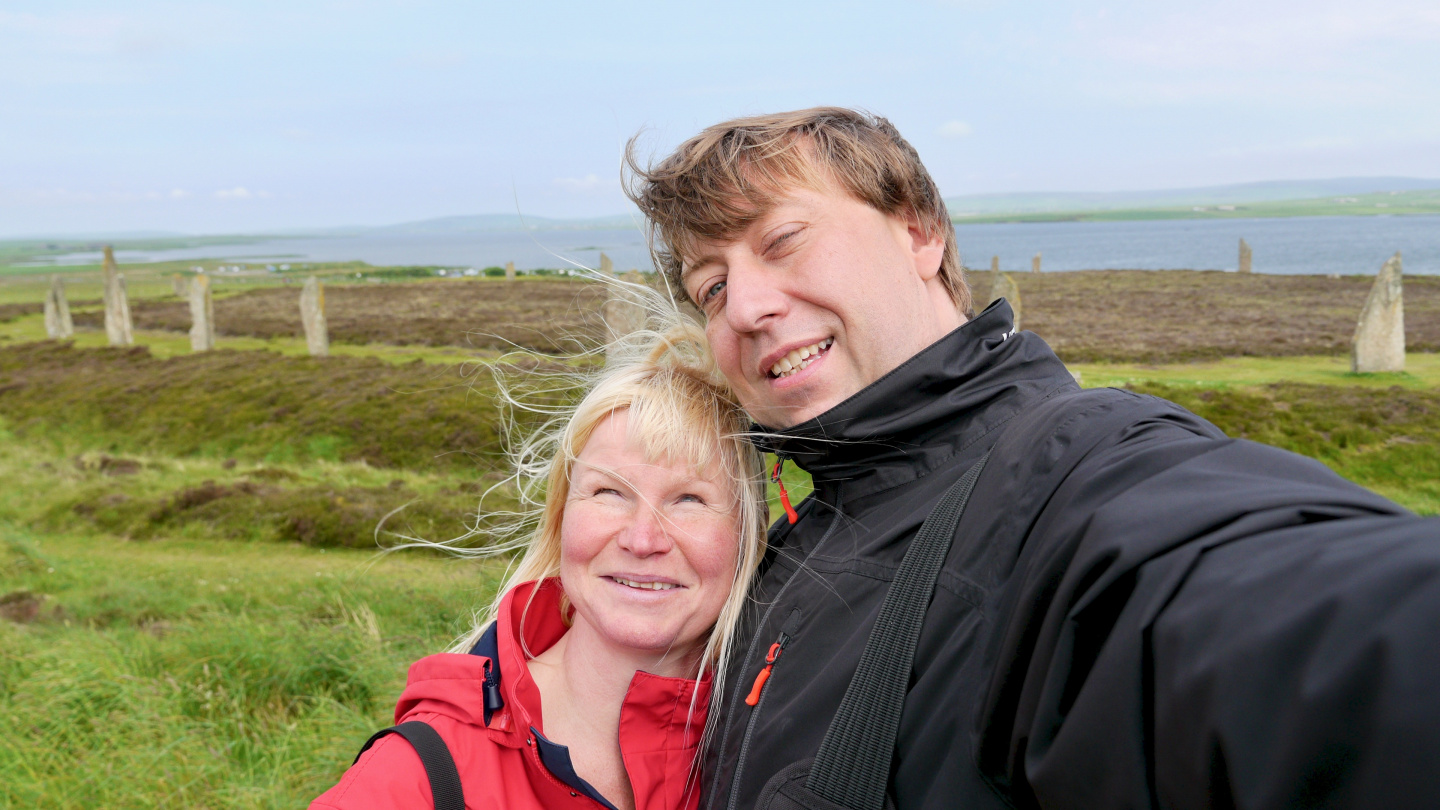
On a hill, within a viewing distance from the Ring of Brodgar stands the Maeshowe chambered cairn built 2800 BC. Its architecture is so different that Andrus commented that “It feels like it is an alien architecture and built by distant civilization”. The cairn is built from flagstones with the ceiling curving in layer by layer. Four tall standing stones are placed into the four corners of the main chamber that was surprisingly large. There were side cells on the sides of the main chamber. The entrance had been built in a way that during the winter solstice the sun is shining through it to lighten the main chamber.
There were also some runes on the walls of the chambers made by Vikings after they had entered the cairn by breaking down the roof in the 12th century. For some strange reason this was the only prehistoric place where it was not allowed to take any photographs.
My early favourite sights were the stone henges but Skara Brae made it on the Mainland of Orkney. In the winter of 1850, a great storm battered Orkney. The storm together with extremely high tides revealed unbelievable discovery from under the grass. Several buildings over 5000 years old saw the daylight again. The local laird, William Watt of Skaill, embarked on an excavation of the site and remove the sand from the buildings.
By radiocarbon dating in the early 1970s it was confirmed that the settlement dated from the late Neolithic, inhabited for around 600 years, between 3200 BC and 2200 BC. The sand have been preserving the stone dwellings for four thousand years keeping Skara Brae in incredibly well-preserved condition. Not only are the walls of the structures still standing, and alleyways roofed with their original stone slabs, but the interior fittings of each house give an unparalleled glimpse of life as it was in Neolithic Orkney.
The original houses are protected by restricting the visitors to the view from the outside only. However there is a replica house that can be explore from all angles.
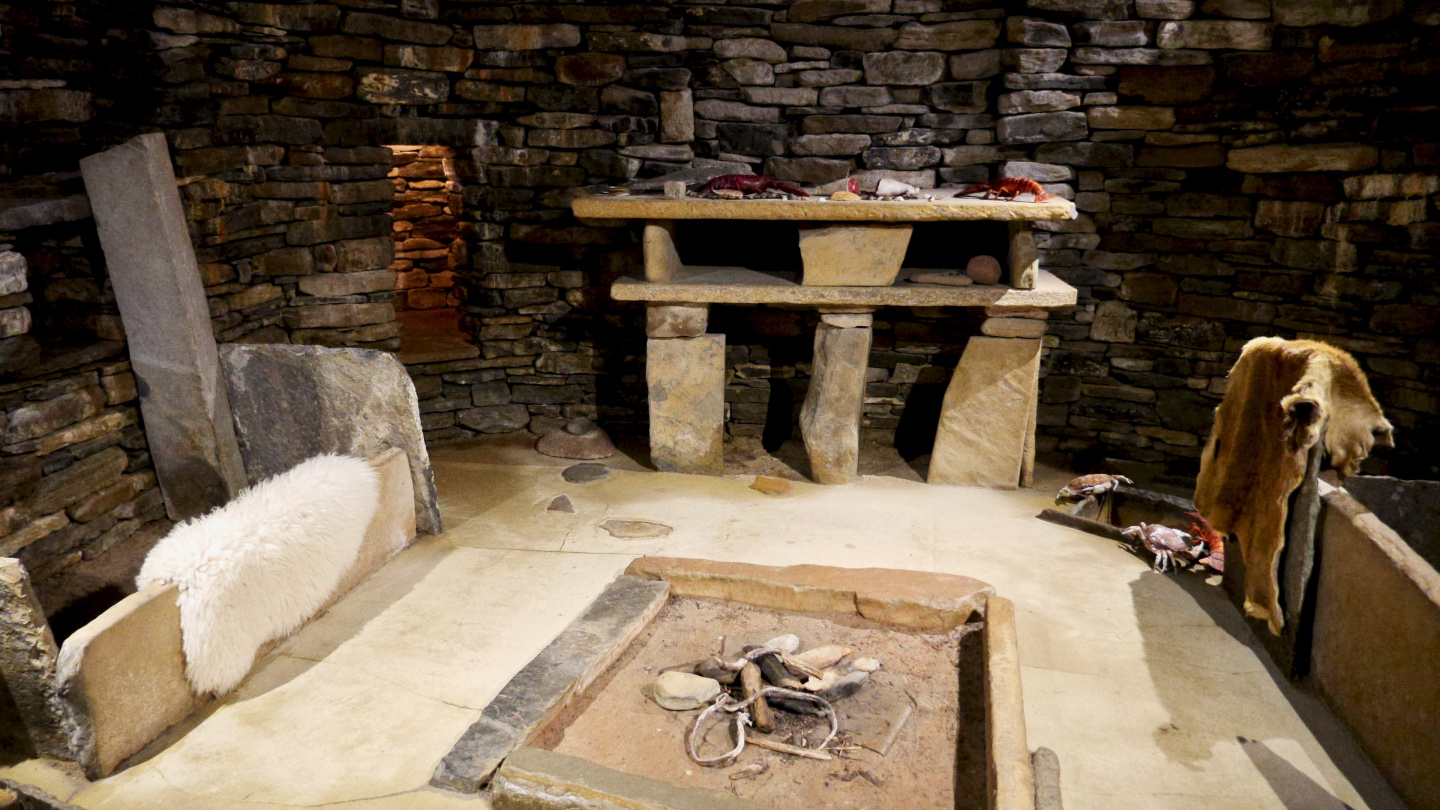
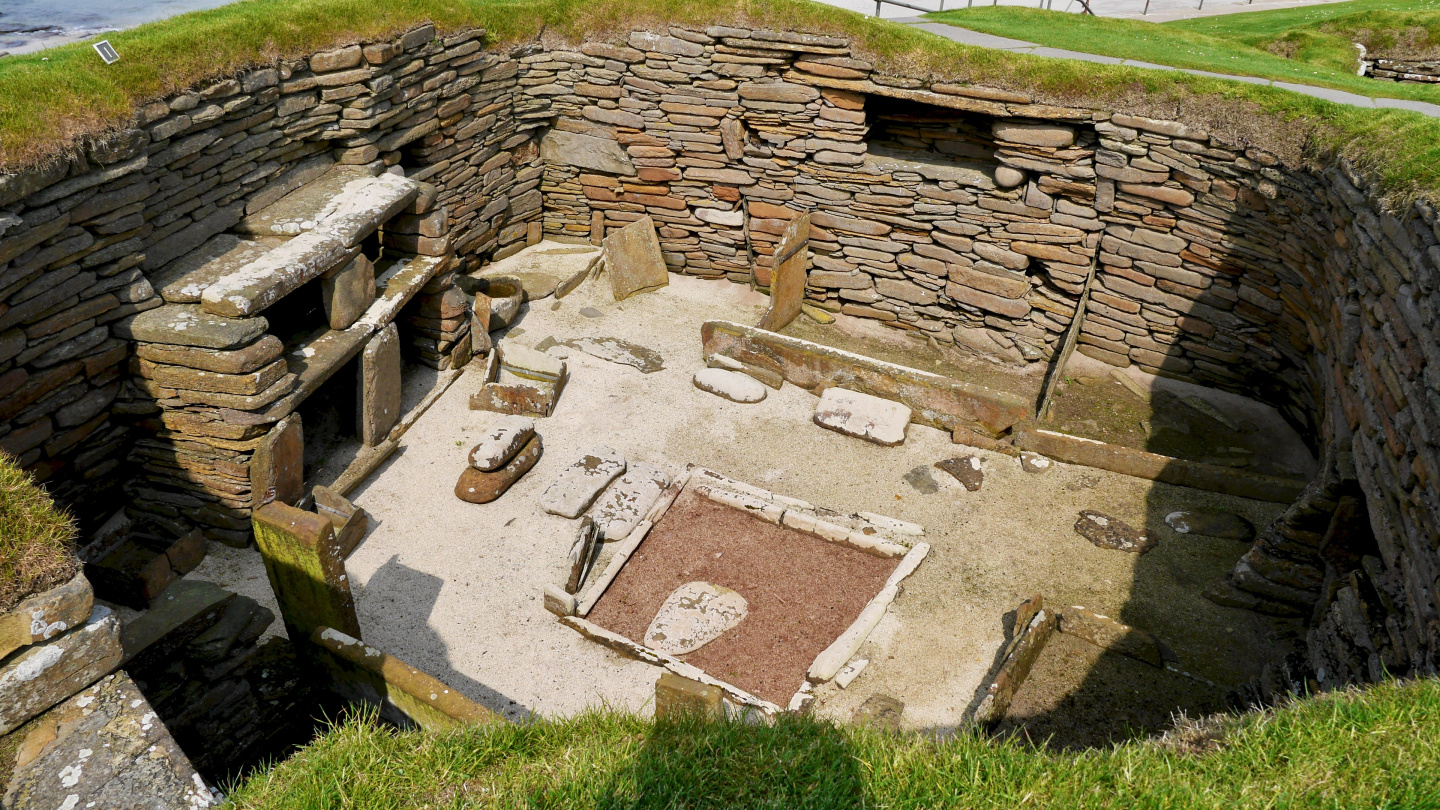
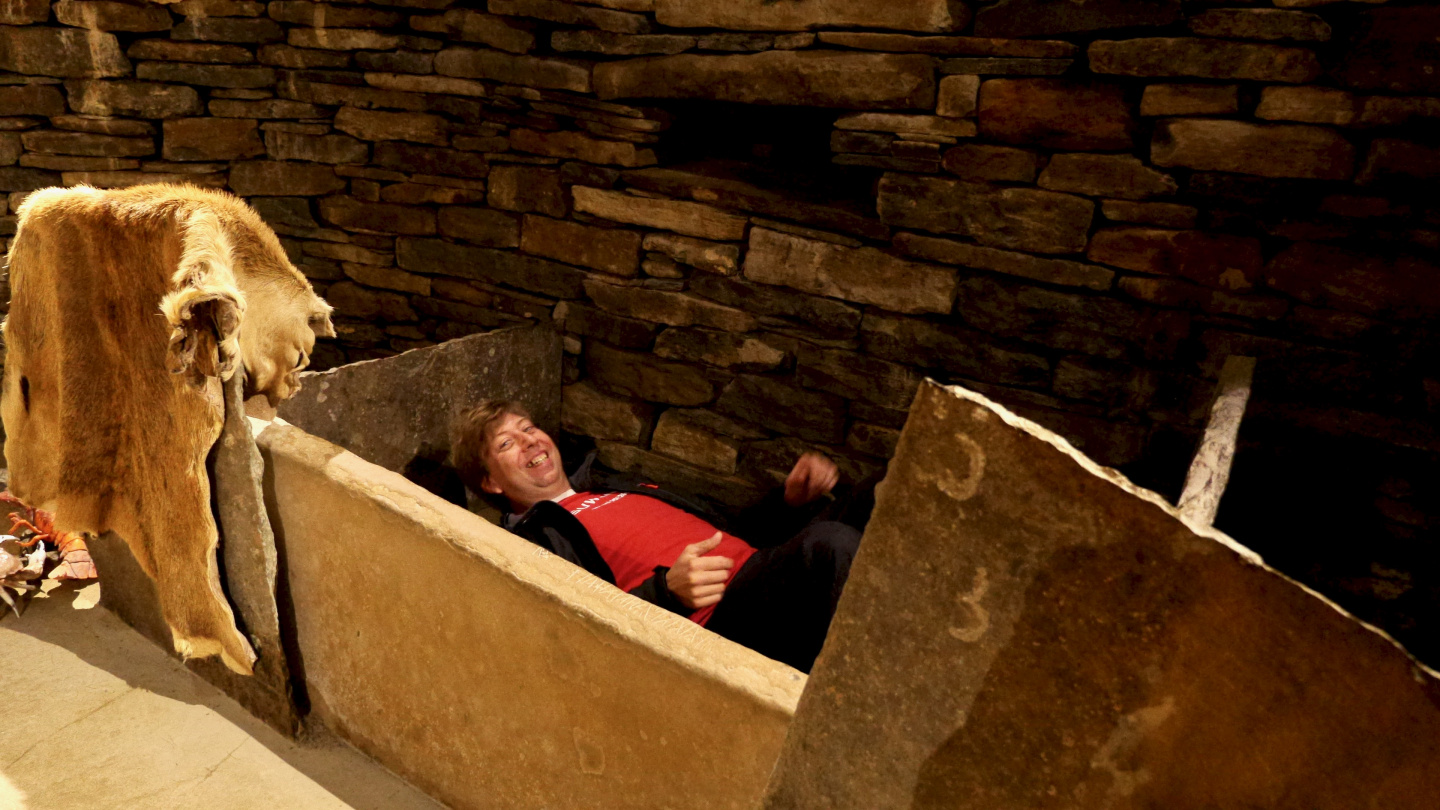
In the middle of the house is the hearth. The beds are built on the sides of the house, separated by knee high vertical stone slabs from the rest of the building. The houses had both the front and back entrance located at the ends of a long curved corridor. This way they got the ventilation but the wind did not enter to cool the house.
To my surprise, because of my blindness I could also enter the actual stone age buildings. The guide presented the dwellings and I could enter the one called workshop that had many shelves on the walls presumably to hold the goods or tools. The houses are built next to each other with narrow meandering alleys between them. The village community formed from these small houses.
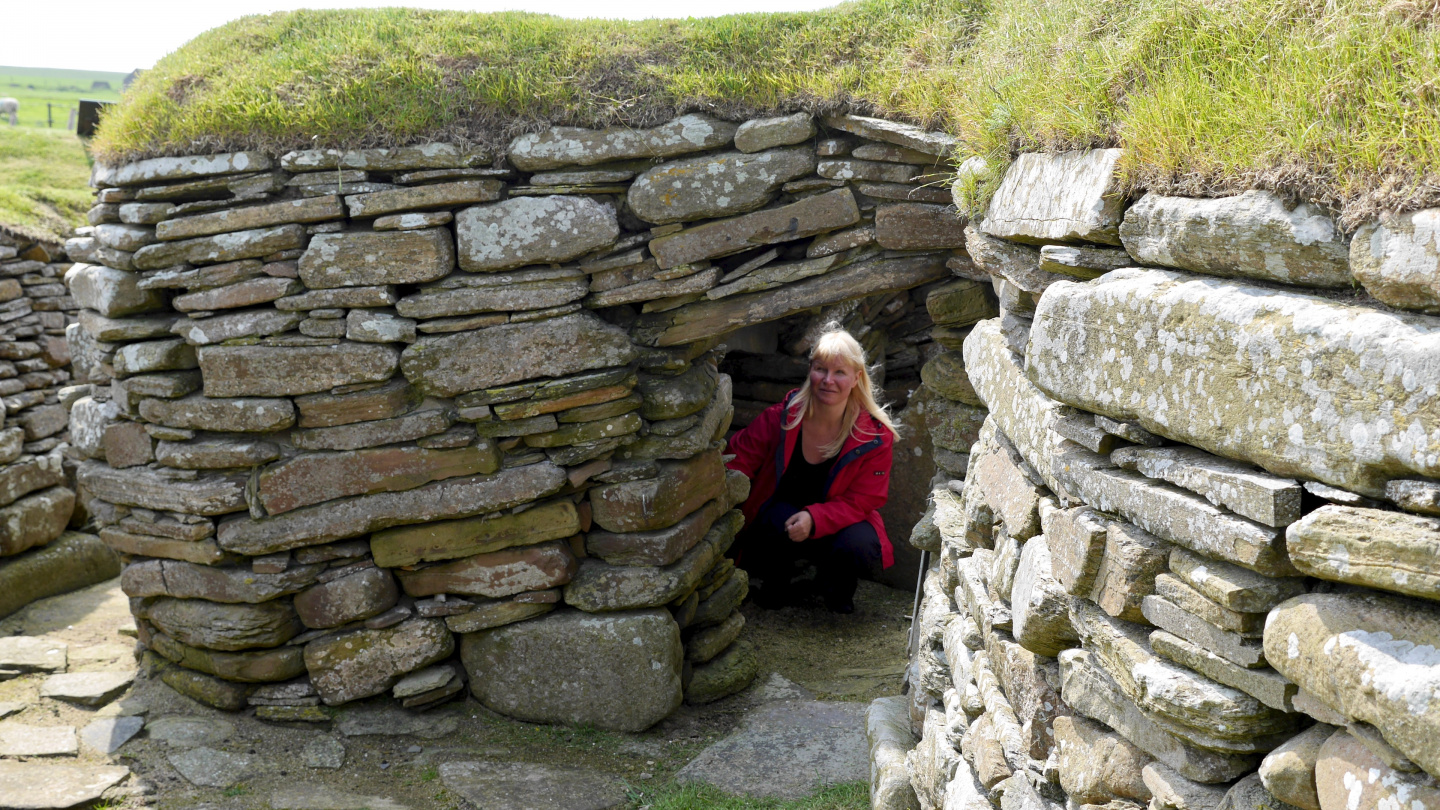
5000 years ago the climate on Orkney was a few degrees warmer than today. The soil was more fertile and people have got their living from farming, hunting and fishing. However there is no information why the village was abandoned. Was it a disease, a war or a natural catastrophe that caused to people to move out remains a mystery.
Skara Brae was a place causing bewilderment and admiration at the same time. It was worth sailing so far for seeing a glimpse of life of our ancestors.


Hei Eve ja Andrus
Hei Eve ja Andrus
Olipa taas kivaa luettavaa, jo odottelinkin paivitysta….
Kiitos!
T. Johanna
Moi Johanna, Olemme
Moi Johanna, Olemme hämmästykseksemme olleet niin netin kuin puhelinverkonkin ulottumattomissa, joten blogia emme ole pystyneet päivittämään. Meillä on monta juttua kuitenkin tulossa ja saamme sitten blogin taas ajan tasalle.
Olemme nähneet todella upeita paikkoja niin Orkneylla, Shetlannissa kuin nyt täällä Länsi-Skotlannissa. Terkkusia Isle of Skye saarelta.
t Eve